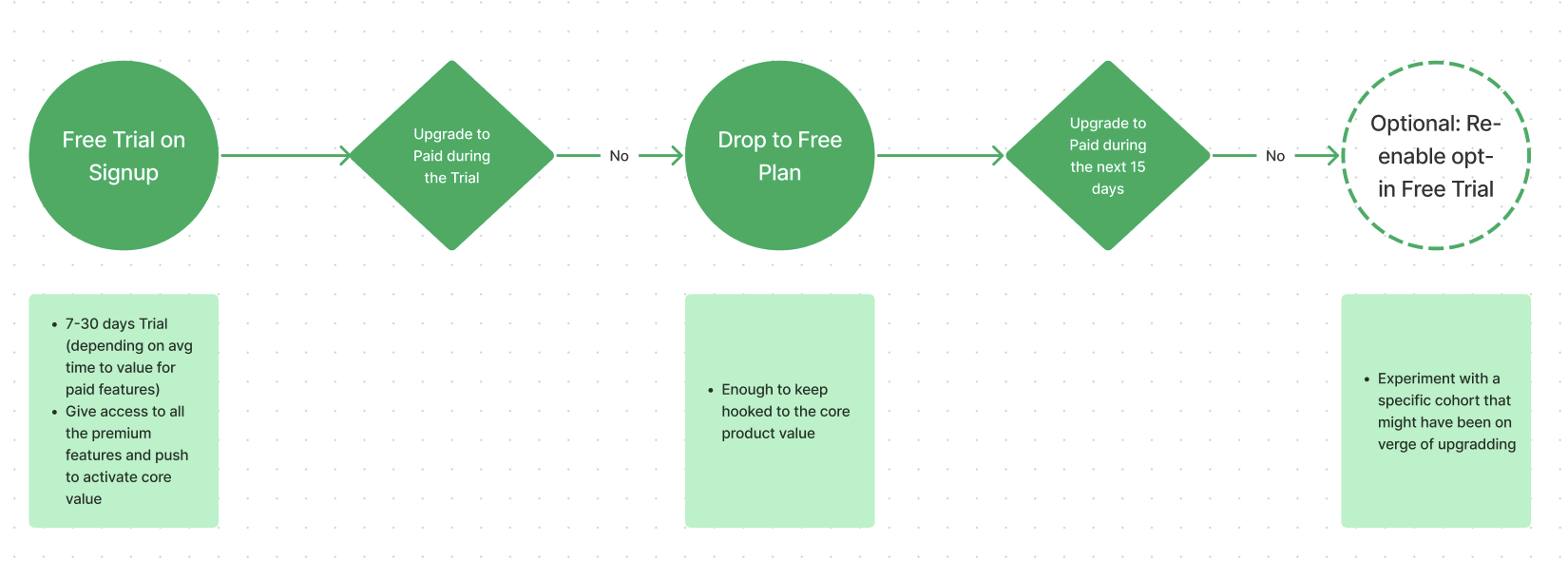A Tasty Freemium Strategy

One of the challenging questions you have to answer as a founder is what goes in the Free bucket and what goes in the paid bucket. This decision depends a lot on your target market and their behavior. If you are trying to do a typical bottoms-up motion targeting SMBs and Mid-market, your customer mix should look something like this:
- 50% of customers on Free plan: You want to design your features such that most users get value without paying a penny. They should be able to experience the core value proposition and continue to use your product regularly. As they love your product, word of mouth becomes a critical factor through these folks. Also, when you are targeting the SMB market, you are trying to build economies of scale. So, if anything you want more than 50% of customers in this bucket.
- 45% of customers on a self-serve paid plan (Across all self-serve paid tiers): Your self-serve tiers are likely broken down into 1-3 paid tiers. The 80/20 rule applies here. More customers in the cheaper bucket and less in the higher-paid tiers. These features should be easy to set up without any human intervention and should create significantly more value compared to the free tier.
- 5% of customers on the enterprise plan: This will make up 80% of your revenue and later stages of your company. You want to grow this section without slowing down on the previous tiers. The features here need to be more than an account manager and premium support. Otherwise, your sales team will have a hard time getting anybody on the call. The features in this tier are often complex to set up and provide organization-wide value to your customers.
So, the next step is how do you productize your Freemium strategy such that you can maximize upgrades to your paid plans. There are various different options here:
- Obviously, no free trial is a strategy but significantly limits the growth potential for a bottoms-up approach in the SMB and Mid-market.
- Only opt-in Free-Trial after activation. Your hope is that customers will eventually want access to more features and as a result will start their Free Trial. This could work as long as your free plan is good enough to keep users hooked. Then, down the road, they will realize a bigger need or stumble on a paid feature. Side note, we experimented with extending the trial window and that hurt upgrades to paid. So, less time down is more here.
- Default everyone to a free trial on Signup. Get users to realize maximum product value during their initial days trying out the product. Then they can decide if they want to continue to use the paid version or go back to the free tier. When we, at Sentry, experimented with this approach, we saw a significant upside. Users are more inclined to set up and explore premium features during their first few weeks compared to later in the journey. You want to make sure to help users realize the core value of the product and then push for upgrades to be paid even while in the Free Trial window.
Once users go through a Free Trial and don’t upgrade, you want to bring them back to the free tier. This is also a good time to help them understand the differences across different tiers. We are currently experimenting with a potential second Free Trial window for users on top of their Free Trial on Signup. I will update the post after our experiment closes.
Key Takeaways:
- The freemium customer mix for the SMB/mid-market should be: 50% free tier, 45% paid tier, 5% enterprise tier
- Provide a Free Trial on Signup with an option to do a second trial in future.